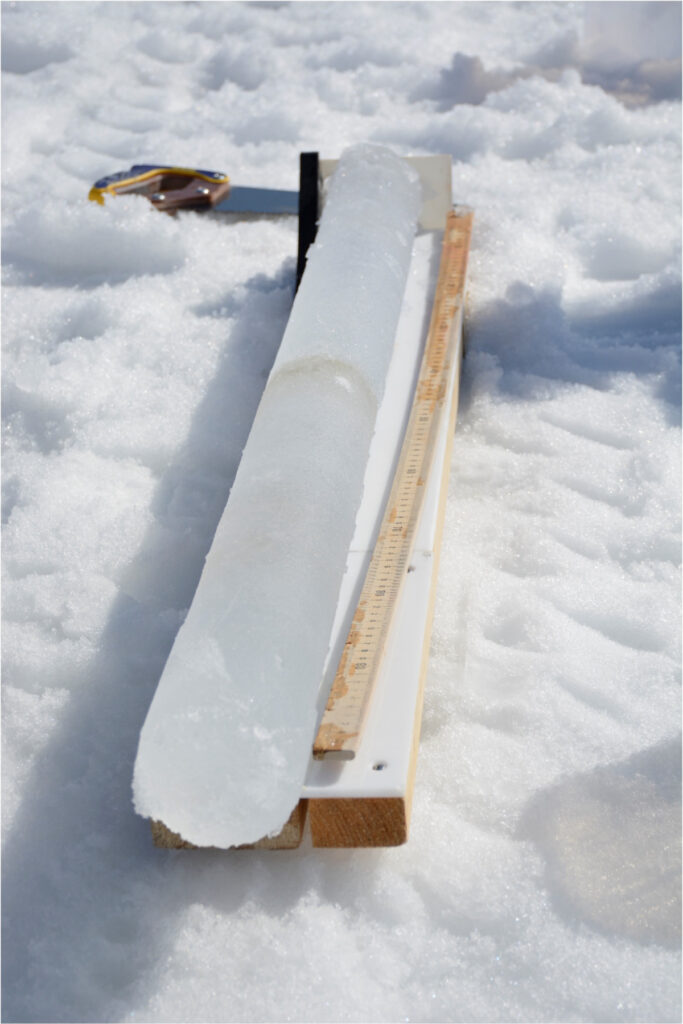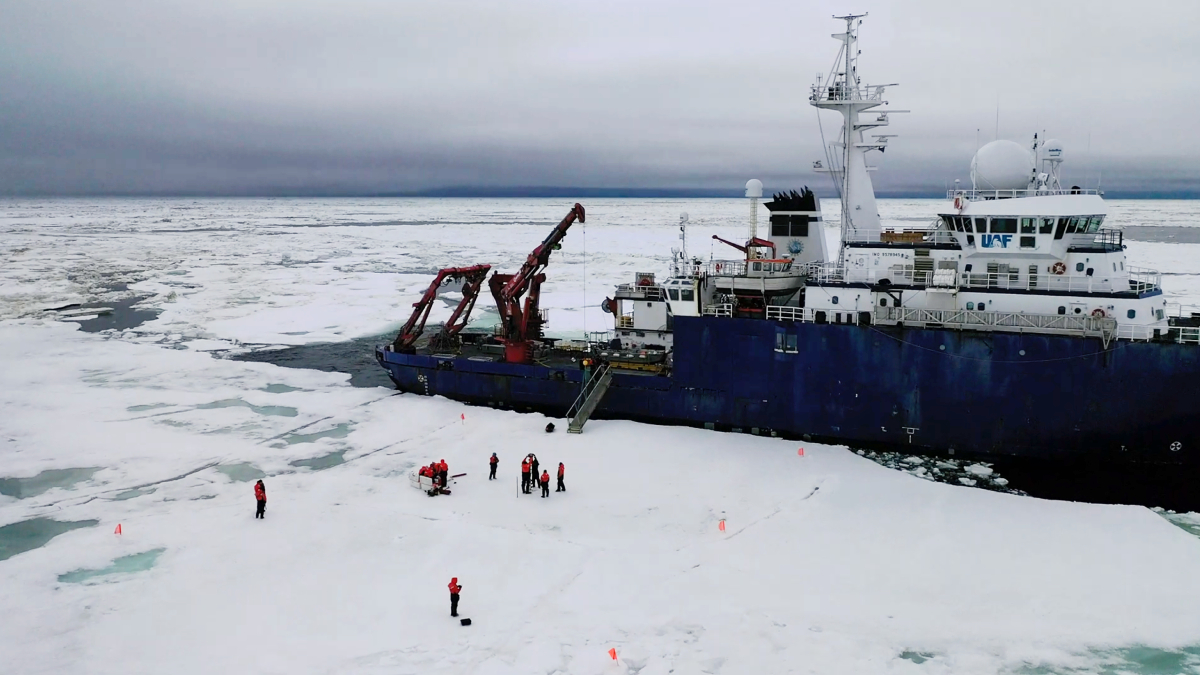Hidden in Arctic sea ice are microscopic organisms that do more than eke out a meager existence on scraps of light filtered through their frozen habitat. New research has shown that ice diatoms have adapted to move efficiently through the ice, allowing them to navigate to better sources of light and nutrients. During in situ and laboratory experiments, ice diatoms glided through the ice roughly 10 times faster than diatoms from temperate climates and kept gliding even at −15°C, the lowest temperature recorded for single-celled organisms.
“People often think that diatoms are at the mercy of their environment,” said Manu Prakash, a bioengineering researcher at Stanford University in California and lead researcher on this discovery. “What we show in these ice structures is that these organisms can actually move rapidly at these very cold temperatures to find just the right home. It just so happens that home is very cold.”
These findings, published in the Proceedings of the National Academy of Sciences of the United States of America, may help scientists understand how microorganisms and polar ecosystems respond to climate change.
Gliding Through Life

Diatoms are microscopic, single-celled algae that photosynthesize. Up to 2 million species of diatoms produce at least 20% of the oxygen we breathe and form the backbone of ecosystems throughout the world, from the humid tropics to the frigid poles. Scientists have known since the 1960s that diatoms live within and move through the ice matrix but have been unable to decipher how they do it.
“Ice is an incredible porous architecture of highways,” Prakash explained. “Light comes from the top in the ice column, and nutrients come from the bottom. There is an optimal location that [a diatom] might want to be, and that can only be possible with motility.” (Motility is the ability of an organism to expend energy to move independently.)
Prakash and a team of researchers sought to observe ice diatoms’ movements in situ and so set off for the Chukchi Sea aboard the R/V Sikuliaq. On a 45-day expedition in 2023, they collected several cores from young sea ice, extracted diatoms from the cores, and studied the diatoms’ movements on and within icy surfaces under a temperature-controlled microscope customized for subzero temperatures.
At temperatures down to −15°C, Arctic ice diatoms actively glided on ice surfaces and within ice channels. The researchers said that this is the lowest temperature at which gliding motility has been observed for a eukaryotic cell.
“Life is not under suspension in these ultracold temperatures. Life is going about its business.”
“Life is not under suspension in these ultracold temperatures,” Prakash said. “Life is going about its business.”
“This is a notable discovery,” said Julia Diaz, a marine biogeochemist at Scripps Institution of Oceanography in San Diego. “These diatoms push the lowest known temperature limit of motility to a new extreme, not just compared to temperate diatoms, but also compared to more distantly related organisms.” Diaz was not involved with this research.
“Since the 1960s, when J. S. Bunt first described sea ice communities and observed that microbes were concentrated in specific layers of the ice, it has been obvious that they must have a means to navigate through ice matrices,” said Brent Christner, an environmental microbiologist at the University of Florida in Gainesville who also was not involved with this research. “This study makes it clear that some microbes traverse gradients in the ice by gaining traction on one of the most slippery surfaces known!”
“While these diatoms are clearly ice specialists, they nevertheless appear to be equipped with the equivalent of all-season tires!”
The team compared the movement of ice diatoms to those of diatoms from temperate climates. On both icy and glass surfaces under the same conditions, ice diatoms moved roughly 10 times faster than temperate diatoms. In cold conditions on icy surfaces, temperate diatoms lost their ability to move completely and just passively drifted along. These experiments show that ice diatoms adapted specifically to their extreme environments, evolving a way to actively seek out better sources of light to thrive.
“I was surprised the ice diatoms were happily as motile on ice as glass, and much faster on glass that the temperate species examined,” Christner said. “While these diatoms are clearly ice specialists, they nevertheless appear to be equipped with the equivalent of all-season tires!”
Can Diatoms Adapt to Climate Change?
The Arctic is currently experiencing rapid environmental changes, warming several times faster than the rest of the world. Arctic climate change harms not only charismatic megafauna like polar bears, Prakash said, but microscopic ones, too.
“These ecosystems operate in a manner that every one of these species is under threat.”
Diatoms are “the microbial backbone of the entire ecosystem,” Prakash said. “These ecosystems operate in a manner that every one of these species is under threat.”
Prakash added that he hopes future conservation efforts focus holistically on Arctic ecosystems from the micro- to macroscopic. Future work from his own group aims to understand how diatoms’ gliding ability changes under different chemical conditions like salinity, as well as how the diatoms shape their icy environment.
“Scientists used to think that sea ice was simply an inactive barrier on the ocean surface, but discoveries like these reveal that sea ice is a rich habitat full of biological diversity and innovation,” Diaz said. “Sea ice extent is expected to decline as climate changes, which would challenge these diatoms to change the way they move and navigate their polar environment. It is troubling to think of the biodiversity that would be lost with the disappearance of sea ice.”
—Kimberly M. S. Cartier (@astrokimcartier.bsky.social), Staff Writer

